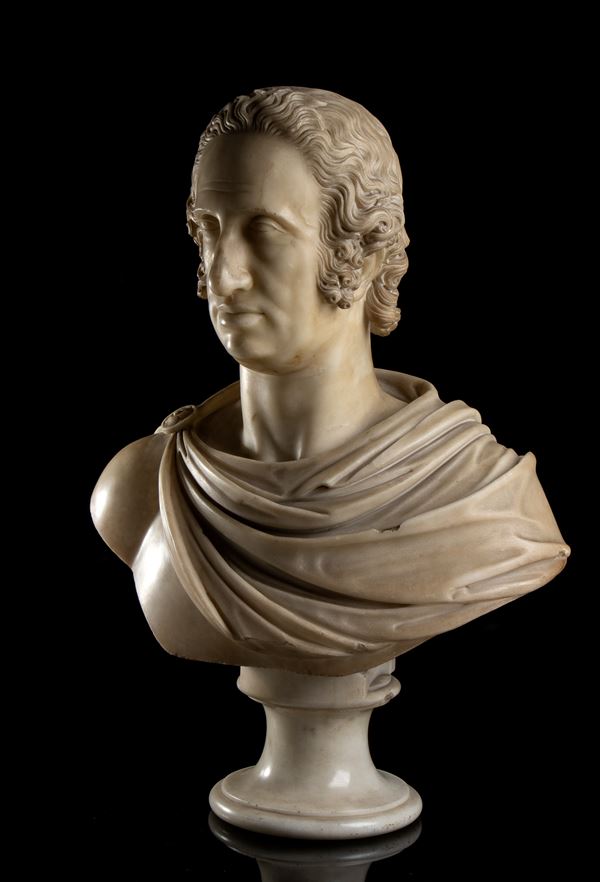165
Antonio Canova (Possagno, 1757 - Venezia, 1822)Circle of
Bust of Ferdinand IV of Bourbon King of Naples
White marble
cm. 52x50x34
The son of Carlo di Borbone, king of Naples and Sicily, and Maria Amalia di Sassonia, Ferdinando di Borbone (Naples, 1751-Naples, 1825) was a notable figure in European history in the decades between the 18th and 19th centuries. With minor interruptions related to the brief season of the Neapolitan Republic and later the longer French rule over the Neapolitan city, he was king of Naples from 1759 to December 1816 under the name Ferdinando IV, as well as king of Sicily from 1759 to 1816 under the name Ferdinando III. With the unification of the two monarchies following the Congress of Vienna, he became ruler of the Kingdom of the Two Sicilies from 1816 to 1825 under the name Ferdinando I. The first ruler of the Bourbon lineage born in Naples, he was nicknamed "Re Nasone" because of his prominent nose, but also "Re Lazzarone" because of his behaviors not in keeping with aristocratic etiquette.
His unmistakable physiognomy was effigyed in countless coins and painted portraits, but not as often immortalized in plastic forms. Prominent among the sculptures, of course, are the portraits of the sovereign by Antonio Canova: the monumental one in the guise of Minerva preserved in the National Archaeological Museum in Naples, with its plaster sketch now in the Possagno gipsoteca; the terracotta bust in the Filangeri Museum fo Naples; and the marble one in the Reggia di Caserta in togate robes. It is to the latter that our high quality specimen is closely related, for which reference is proposed here to one of the eminent sculptors active in the Canovian atelier.
Provenance:
Private Collection, Rome
Private Collection, Rome
Live auction 275
Paintings, Drawings and Sculptures from 14th to 19th Century
Palazzo Caetani Lovatelli, thu 23 November 2023
SINGLE SESSION 23/11/2023 Hours 15:00














